How to Write a True Crime Movie: Working with a True Crime Story
The phrase “Based on a true story” is one guaranteed to make any moviegoer perk up in their seat, before the title credits have even started rolling. There is something about their promise of truth (or some portion of it) that functions as a snare for the audience of a true crime movie.
Evidently, this notion has continued to persist, as we have seen the popularity of the true crime genre skyrocket; infiltrating every facet of mainstream media that we engage with today.
As the podcast, television and film industries become increasingly saturated with true crime related content, there is no better time to start writing your true crime movie.
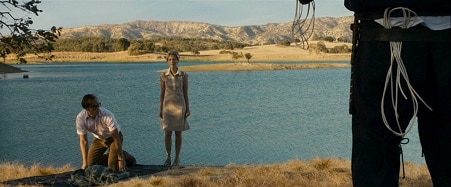
Above all, this article will walk you through the 12 steps of writing a true crime story:
- 1. Choosing Your Crime. What Makes a Good True Crime Story?
- 2. Finding Your Source Material
- 3. Establishing Your Angle
- 4. Detective Point of View
- 5. Criminal Point of View
- 6. Omniscient Point of View
- 7. Genre and Theme
- 8. Setting
- 9. Character Development
- 10. Plot Development
- 11. Dialogue
- 12. Director, Writer, Actor
What is a True Crime Movie?
In the most basic sense, a true crime movie tells the story of a real life historical crime. It takes its cues from the actualities of what happened, telling the story through the real people involved.
There might well be fictionalized elements included. But overall, the facts of what actually happened make up the narrative. Above beyond just depicting the facts of a historical crime, the true crime genre also comes with implications.
Often true crime movies can have effects on the real life people involved (particular if depicting very recent history). This brings a certain level of notoriety to the genre. True crime movies can be essential in shaping the culture around us. They can be crucial to audiences understanding of a particular crime or a particular person.
All the more reason to approach writing within this genre with care and responsibility.
So, without further ado, let’s get into the 12 steps that will give you a motive to write a true crime story:
1. Choose Your Crime
Firstly, the best way to kick start the development process is by locating the specific true crime story you want to tell – and there’s no shortage of material.
“Crime has always been a regrettably consistent element of the human experience“
Mark Frost, The List of Seven
Pick up any newspaper or magazine and you’ll be sure to find at least one true crime story adorning the front cover.
This phenomenon is not solely attributed to the pervasiveness of crime within our society, but to the morbid fascination we humans have with true crime, that sells thousands of copies.
It is this public fascination that makes any true crime movie a crowd-puller.
However, it is important to note that not all crime peaks audience fascination. Generally, petty theft and tax evasion won’t enthral your viewers in the way that serial murder or bank heists will.
So what makes a good true crime story?
It is wise to pick a true crime story that is enveloping, shocking or scandalous. Perhaps one amassing a plethora of public intrigue, speculation or controversy. One that will explore the unanswered questions that have been asked by the public for years.
Unsolved mysteries such as ZODIAC, THE BLACK DAHLIA, and MEMORIES OF MURDER or celebrity spectacles like THE PEOPLE V. O.J. SIMPSON: AMERICAN CRIME STORY are sure-fire to rake in a viewership.
In contrast, you could choose a lesser known crime with an untold story. Accordingly, something that will peak the fascination of even the most seasoned true crime aficionado. On the other hand, you could select a true crime story that speaks to YOU personally.
Lastly, you should consider whether the true crime story holds up on its own, without the aid of cinematic bedazzling. Does the unabridged tale make you want to research the story further?
If so, you’ve found your story.
2. Find Your Source Material
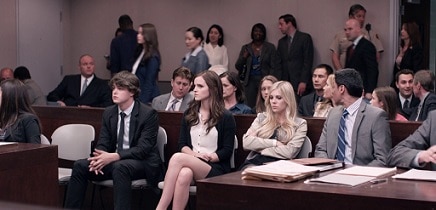
Once you’ve determined your crime, its time to conduct the research process.
Additionally, it is a good time to ask yourself how true to life you want your true crime story to be. Semi-fictional or a entirely historically accurate?
The 1958 Charles Starkweather and Caril Ann Fugate killing spree inspired a body of true crime Movies from BADLANDS to NATURAL BORN KILLERS, all ranging in levels of authenticity.
If your answer leans towards accuracy, the following sources are imperative:
Firstly, the best reference to hunt for is a biography. Ideally, those written by practised crime writers and investigators. These often provide a significantly overarching viewpoint and make for some of the most successful true crime movie adaptions:
- GOODFELLAS – based on Wiseguy by Nicholas Pileggi
- CASINO – based on Casino: Love and Honor in Las Vegas by Nicholas Pileggi
Secondly, you could find an autobiography. Straight from the mouths of those involved, they provide an insiders perspective. Whilst bias and truth stretching may taint the overall validity, they offer an insight into how officers and offenders perceive themselves and their actions:
- THE WOLF OF WALL STREET – based on The Wolf of Wall Street by Jordan Belfort
- DONNIE BRASCO – based on Donnie Brasco: My Undercover Life in the Mafia by Joseph D. Pistone
Thirdly, you could expound on articles written about the case:
- THE BLING RING – based on The Suspects Wore Louboutins by Nancy Jo Sales.
- THE ACT – based on a BuzzFeed article by Michelle Dean
Finally, you might source police documents for the facts and archived news coverage to better understand the contemporary public perception:
- WHEN THEY SEE US – derived from police documents, court transcripts and interviews.
- HEAVENLY CREATURES – derived from news coverage and interviews.
3. Establish Your Angle
With the true crime story and its details laid before you, your next move is to select your angle.
This part can really make or break your true crime movie. It will be what sets your narrative aside from countless others.
Ted Bundy and Jeffrey Dahmer are household names, albeit unsolicited. Their horrific crimes have been replicated to the point that most media portrayals seem stale or derivative.
But their recent Hollywood resurrections dodge these adjectives by way of their distinctive angles.
EXTREMELY WICKED, SHOCKINGLY EVIL AND VILE is told from the viewpoint of Bundy’s longtime girlfriend whilst similarly, MY FRIEND DAHMER comes from one of Dahmer’s classmates.
Likewise, Peter Jackson’s Heavenly Creatures, doesn’t focus on the notorious Parker-Hulme murder, but rather the relationship between the two girls; inverting the media saturated portrayal.
Ava DuVernay’s When They See Us puts us in the shoes of the exonerated, and explores the corruption surrounding the Central Park five case and its miscarriages of justice.
Angling will be vital in giving your true crime movie an edge, allowing it to stand out in the vast sea of true crime related content.
Cat or Mouse?
Generally speaking there are three conventional positions to approach your true crime movie from. They are not limited to these three examples, but most true crime stories will fall into one of these categories…
4. Hunting a Killer: Detective POV

Everybody loves to play armchair detective, and that’s why a detective POV is a crowd-pleaser.
This angle is particularly engrossing as it follows along with the in depth investigation. If your interest lies in forensic testing and evidence hunting then this POV is a fitting option.
Moreover, these tales seem to be most effective if you’re investigating a long-running true crime story focused on the hunt for an unspecified killer.
You might detail the search for a killer who will eventually be brought to justice (WHITE HOUSE FARM) or investigate a cold case that remains shrouded in mystery (Zodiac, The Black Dahlia).
And maybe, your true crime story will follow the hunt for an illusive murderer, who will finally be caught years after your movie has premiered (that really happened with Memories of Murder).
5. Portrait of a Killer: Criminal POV

In contrast of positioning your viewer in the role of police inspector, you can offer them an alternative perspective: that of the criminal.
“the fascination is not so much about what these broken people do as it is about why they do it. Deconstructing that mystery […] is what keeps (many) hopelessly captivated by true crime stories.”
Janice Holly Booth, A Voice Out of Nowhere: Inside the Mind of a Mass Murderer
By approaching your true crime story from the criminal POV, you can really delve into the psychology or a killer and explore the mechanics or their mind.
Like the aforementioned Bundy and Dahmer Biopics, another film that explores the criminal origin story is Patty Jenkins‘ MONSTER, which fixates on the life and crimes of Aileen Wuornos.
Producer Brad Wyman has noted that Monster is “not a documentary” but rather “a dramatic portrayal searching for kind of a greater truth rather than a … a factual truth.”
It is this greater truth that makes the criminal backstory an interesting narrative that offers an ulterior standpoint.
6. The Full Report: Omniscient POV
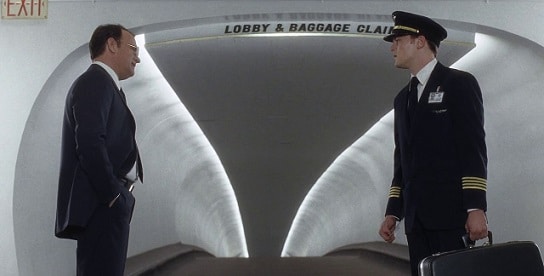
Whilst explicitly focusing on a single perspective can provide a deeper insight into the inner workings of the criminal individual or crime solving unit, sometimes detailing the bigger picture can prove more potent.
“The detective and his criminal wear versions of the same mask“
Jane Roberts, The Nature of Personal Reality
This observation encapsulates why perhaps the omniscient point of view holds the most weight within a true crime story.
Essentially every all-encompassing tale of true crime features two predominant parties: the law and the lawbreaker; the protagonist and the antagonist; the hero and the villain.
In exploring the methodologies of both sides, you give your audience a certain, perceived power. An omniscience that places them a step ahead of both detective and criminal.
AMERICAN GANGSTER is a film harbouring two leads: criminal Frank Lucas (Denzel Washington) and detective Richie Roberts (Russell Crowe). The film is concocted in such a way that depending on your own viewpoint, either or can be viewed as the protagonist or antagonist.
We watch the movie play out from both of their individual perspectives until they are finally forced together, and their stories interweave.
Likewise, Steven Spielberg’s CATCH ME IF YOU CAN follows a similarly intense game of cat and mouse that exposes the strategies of both con man and FBI agent.
In the end, it turns out that both detective and criminal really do wear versions of the same mask, as Frank Abagnale ends up using his skill set to work for the FBI.
Mapping your Case Board
With crime, sources and angle in check, the following steps all revolve around designing the intricacies of your true crime story…
7. A Study in Scarlet: Genre & Theme
If crime is your primary genre, it is beneficial to choose a secondary one; a subgenre within the genre of true crime. It is also important to establish what sorts of themes will run through your narrative. Here are some of the the more popular ones:
Gangster:
- Story: Mafia, Mob and White Collar Crime.
- Examples: Goodfellas, Donnie Brasco, American Gangster
- Themes: Power, Family, Betrayal, Loyalty, Film Noir
Heist Movie:
- Story: Bank or Art Heist, Robbery
- Examples: DOG DAY AFTERNOON, STANDER
- Themes: Action, Drama, Tension, High Stakes, Film Noir.
Courtroom Drama:
- Story: Investigation and Trial
- Examples: The People vs. OJ Simpson: American Crime Story, PHILADELPHIA
- Themes: Drama, Justice, Tension
Psychological Thriller:
- Story: Serial Killer, Detective Story, Investigation
- Examples: Zodiac, Heavenly Creatures, THE FUGITIVE
- Themes: Mystery, Drama, Horror, Paranoia
Star-crossed Lovers:
- Story: Killer Couple, Crime Spree
- Examples: Badlands, Natural Born Killers, BONNIE AND CLYDE, SID AND NANCY
- Themes: Drama, Romance, Lust, Family
8. Bandit Territory: Setting
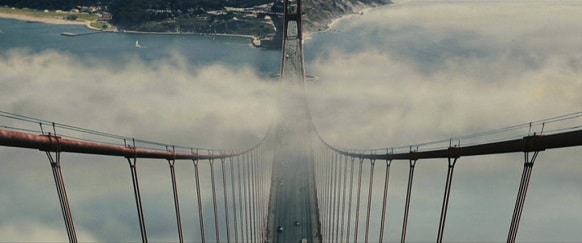
Setting is an area that is already predetermined, as it is inherently linked to the true crime Story you are looking to tell.
Whilst this might appear restricting, you have the freedom to make the surroundings as dazzling or meaningful as you desire. It is up to your creative vision to work with what you’ve already got.
As the Zodiac killer chose the San Francisco Bay area as their hunting ground, David Fincher was able to utilize the spectacular scenery of California to his advantage when making Zodiac.
Likewise, Terrence Malick beautifully encapsulated the great plains of Montana in Badlands, to contrast against the otherwise ugly subject matter.
Many stories organically take place in New York; a hive of activity that often seems part and parcel of the true crime movie.
“It is ridiculous to set a detective story in New York City. New York City is itself a detective story“.
Agatha Christie, Life Magazine
For some true crime movies, setting is is an afterthought, holding no particular significance within the overall story. For others, setting is a crucial part of the mise-en-scene. It is detrimental to the feel of the finished piece. It all depends on what type of true crime movie you’re aiming to make.
9. The Usual Suspects: Character Development
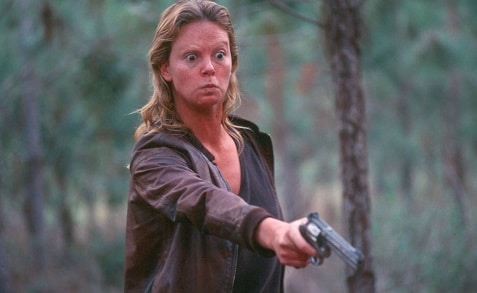
Character development is another pivotal area to address. This is particularly important when characterising the criminals, who take a lot of work to truly embody.
Charlize Theron won an Oscar for her performance as Aileen Wuornos in Monster, in which she was a true tour de force. To prepare for the role, Theron totally transformed her image by gaining weight, shaving her eyebrows off, and wearing prosthetic teeth.
You should also consider how you are going to present your criminal. In the case of Frank Lucas in American Gangster, prosecutor Sterling Johnson Jr reflects that “Frank was everything Denzel Washington was not.’’
By employing someone as popular and likeable as Denzel Washington to play a hardened criminal, the character of Frank Lucas became just that. A character rather than a realistic portrayal.
However, sometimes portraying your villain through a rose tinted lens works to your advantage. Ted Bundy was notoriously charismatic, so much so that he was able to continuously evade capture.
His portrayal by Zac Efron in Extremely Wicked, Shockingly Evil and Vile with a good, family man background only emphasizes this, and disorients the audience.
10. Leave No Stone Unturned: Plot Development
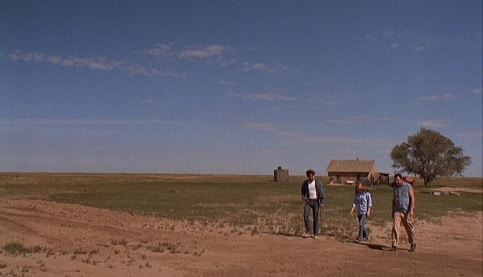
The vast majority of successful narratives will fall into the following, three-part story structure:
- Set-Up (Beginning)
- Confrontation (Middle)
- Resolution (End)
It is pretty easy to reflexively tell a true crime story within these confines if you reshape them to look a little something like this:
- The Crime (Set-Up)
- The Investigation (Confrontation)
- The Arrest/Conviction (Resolution)
Whilst this is the standard true crime movie structure, it definitely doesn’t apply to all. As mentioned earlier, some movies focus solely on the origin story of a criminal or the road to vindication.
You could also consider ways to inject various plot devices into your narrative. This could be a relatively difficult feat to achieve as you are working with true events, but if you know what you’re looking for, its not impossible.
IN COLD BLOOD tells its story partially through flashbacks. In Casino, the metal plate under the driver’s seat functions as a deus ex machina, as it actually allowed Sam Rothstein to survive the car bombing, both on-screen and in real life.
11. Anything You Say: Dialogue
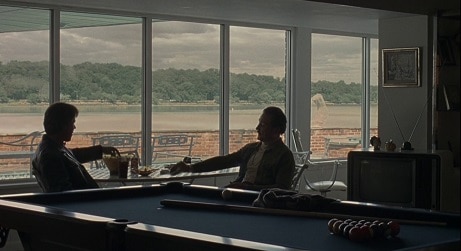
Writing thoughtful dialogue is another key pillar of the true crime movie.
Within the genre, dialogue invites the audience into clandestine dealings that they would otherwise be in the dark about. This is particularly true of gangster/white-collar crime stories that explore intricate, crime syndicates.
Other scenes that benefit greatly from powerfully written dialogue are interrogation scenes. Scenes that pit the cop and criminal of your true crime story against one another in a battle of wits.
This scene from American Gangster exemplifies how such conversations can prove effective:
Lastly, narration by your true crime story’s protagonist can often be just as compelling as the on-screen discourse itself. This is why voice over narration is a particularly useful tool to consider.
If you are sourcing your information from an autobiography, you can extract parts directly from the source material.
The screenplay for The Wolf of Wall Street draws precise lines from Jordan Belforts memoir and transplants them directly into the narration. This works well as he his telling his own, if slightly exaggerated version of events.
12. Partners in Crime: Director, Writer, Actor
The liaison between everybody working to get your true crime movie to screen is the final requisite. When working with a true crime story dealing primarily in facts, it is essential that everybody is on the same page.
This may take shape in the form of your lead actors interacting with those they are portraying – if possible.
In preparation to play Catch Me If You Can‘s Frank Abagnale, Leonardo DiCaprio contacted ‘the Skywayman’ himself, arranging to spend time with him to uncover “the underlying mechanics of what made this guy so engaging“.
Likewise, for Goodfella‘s Robert De Niro kept in close contact with Henry Hill, so to really nail his performance of Jimmy Conway.
Sometimes, given the particularly harrowing subject matter, precautions can be put in place to help actors cope. For When They See Us, Ava DuVernay ensured there were counsellors at hand for any member of cast or crew, if they should so need them.
Stranger than Fiction
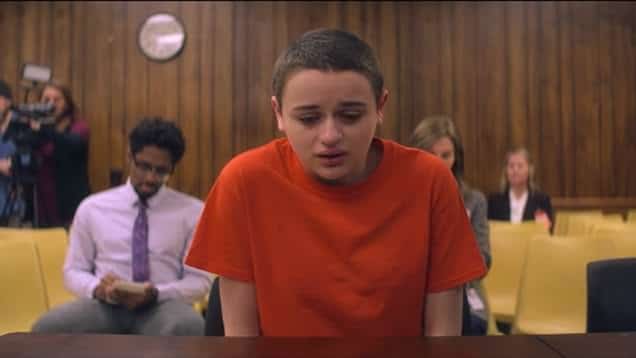
The true crime movie, or more broadly, the true crime story, is not easy to chronicle.
Finding a balance between being truthful yet dramatic; unrelenting yet respectful to the real people that the crime has devastated is tough.
“Truth is stranger than fiction, but it is because fiction is obliged to stick to possibilities; Truth isn’t.”
Mark Twain, Following the Equator: A Journey Around the World
Sometimes the most striking true crime stories are those that decentralise the story from the mainstream narrative. Those that tell facets of the truth that are rarely pursued.
From looking at the success of true crime movies, it is clear to see that whilst the weed of crime bears bitter fruit, it also bears spellbinding stories.
– What did you think of this article? Share It, Like It, give it a rating, and let us know your thoughts in the comments box further down…
– Struggling with a script or book? Story analysis is what we do, all day, every day… check out our range of script coverage services for writers & filmmakers.
This article was written by Sophie Campbell and edited by IS Staff.
Get *ALL* our FREE Resources
Tackle the trickiest areas of screenwriting with our exclusive eBooks. Get all our FREE resources when you join 60,000 filmmakers on our mailing list!

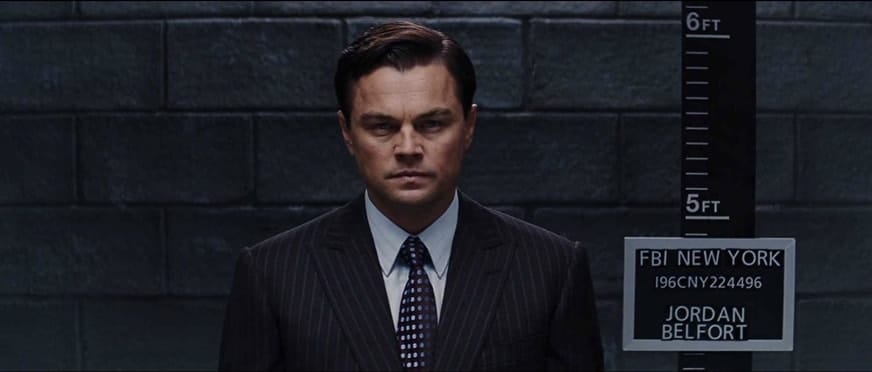
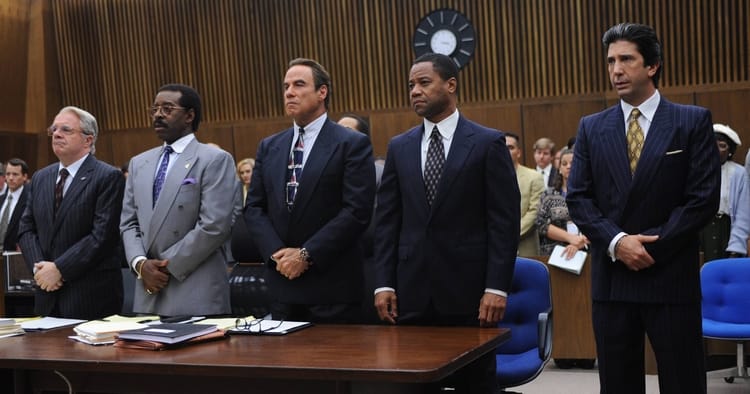
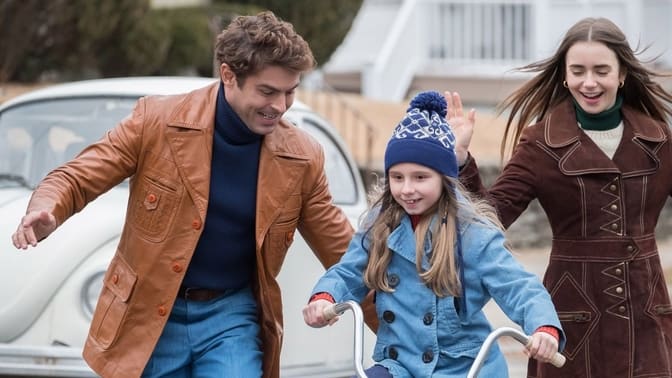

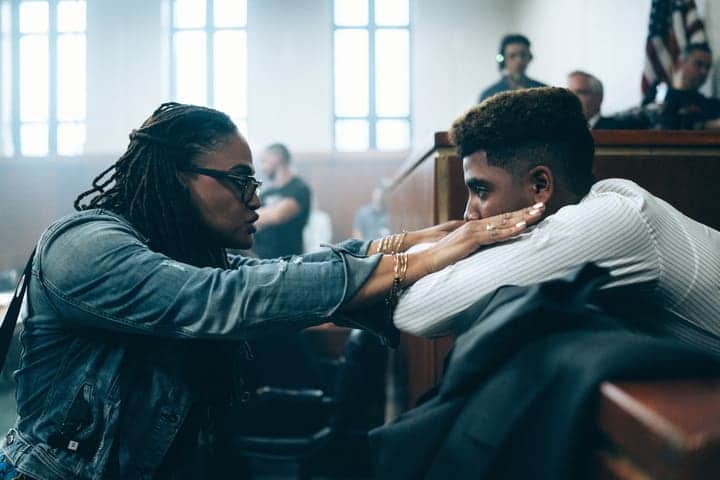
If the crime has not been solved, how much can the police give the author about the crime, other than what is in the newspapers? This story happened 42 years ago.
Exceptional article! Your 12 Elements is an essential outline for the process. I’m working on a true life story about a daredevil, adventurer who had a successful 30 year smuggling career. His massive coke bust in 1997 would eventually precipitate the downfall one of the most successful global cocaine trafficking networks. Many thanks
Thanks Jack, glad you enjoyed it! Good luck with your project, sounds exciting!
I have something that there definitely needs to be a true crime movie made about. It’s something that the world has been very blind to. The world has been fooled by this, and there have been so many lives destroyed in the name of this fantasy. It’s something this country should be deeply ashamed of.
It’s the sex sting scam police have been running for years, pretending to be catching child predators and pretending to be saving real children. It traces back to the cult O.U.R. (Operation Underground Railroad).
Basically, police are creating non-realistic situations to trap vulnerable individuals on adult sites to label them as child predators, for no real purpose that serves the public. The only purpose it serves is to make police and others working in the system look like heroes that are saving and protecting children. None of it is real. It’s just an illusion. People who work in the system have supported this sick game because it brings in a lot of money, and it has helped many people’s careers. So, they play along and keep up this sick and twisted game, not caring that they are destroying many lives in the process, and if anything, they are putting the public at real risks by locking up non criminals, non predators, where they are likely to then become real criminals, then releasing them to the public. It’s incredibly reckless and irresponsible.
What they have done and continue to do is unethical and immoral. It’s straight up psychopathic. Our goal is to fully expose this for what it really is. A movie about it would be a very effective way to do this. There so many stories to be told about this. You can pick any from these real stories to get this very important message out to the world. This needs to be exposed. People need to know this.